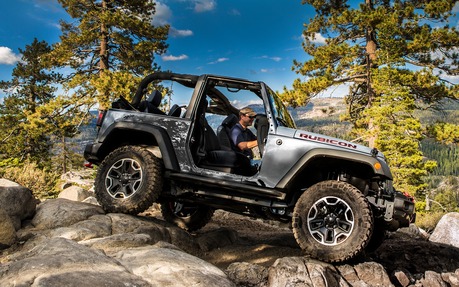Four-Wheel Drive vs. All-Wheel Drive
These days, there are a whole lot of four-wheel drive systems out there, but do you know the difference between the two main types? Let’s begin with what’s known as 4X4. This type of system is usually found in SUVs and off-road vehicles. Basically, the engine sends torque to a transfer case that distributes power uniformly to all four wheels.
4X4 systems are great for off-roading or in extreme conditions where you need maximum grip. But at faster speeds, 4X4 is less effective. The same goes for tight corners since the wheels can't turn at different speeds. That’s why you often have to activate 4x4 manually and drive in two-wheel mode in normal conditions. These systems generally come with a mode that maintains a very low gear for even better grip. That’s the case with pickups and several Jeep vehicles.
- Also: Small Luxury SUVs with All-wheel Drive: Fashionable!
- Also: Affordable Cars with All-wheel Drive: a Rarety
What about all-wheel drive?
All-wheel drive is much better for everyday driving and is found in cars, SUVs of various sizes and even on large sports cars. Unlike four-wheel drive systems that are just for occasional use, all-wheel drive is always active and transfers torque to the wheels according to road conditions and driving style to increase grip.
Certain systems prioritize fuel economy by favouring the front wheels in normal conditions, others favour the rear wheels for a more dynamic ride. Some systems – I’m looking at you, Honda and Mistubishi – can even transfer torque from left to right on the rear wheels, thereby optimizing performance in turns.
The arrival of electric cars is also changing things, especially in the case of Tesla. Some of this manufacturer’s models feature two electric motors: one for the front wheels and the other for the rear.
